The owners of country houses make a lot of efforts so that in the winter they have warm and comfortable rooms in their rooms. A good owner tries to provide the same conditions for pets so that they do not freeze in the cold. For this reason, it is important to properly insulate the dog box for the winter. But first you need to figure out which material is best for this.
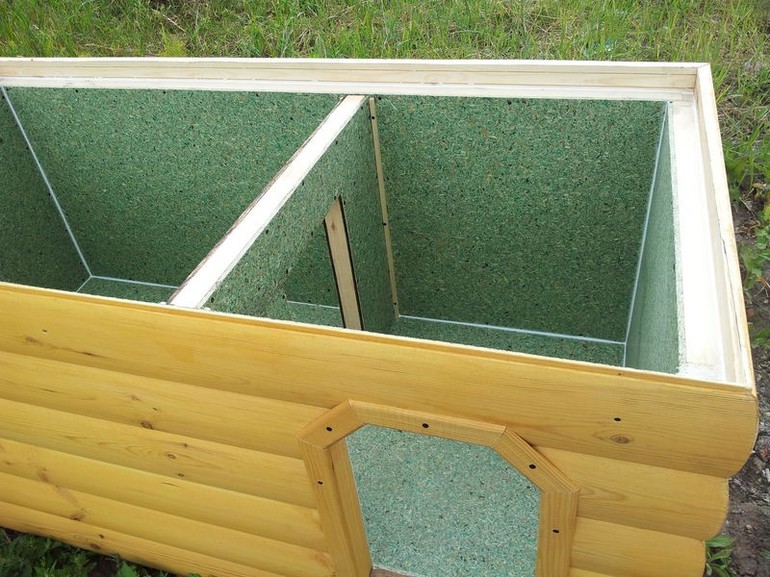
Content
Rules for warming the kennel
When warming a doghouse for the winter, it is worth considering the breed of the pet. Shorthair animals need warmth more than their long-haired relatives. The booths in which pets live often freeze, leak and pass the wind. To keep the pet warm during the winter cold, when arranging his home, the following nuances must be taken into account:
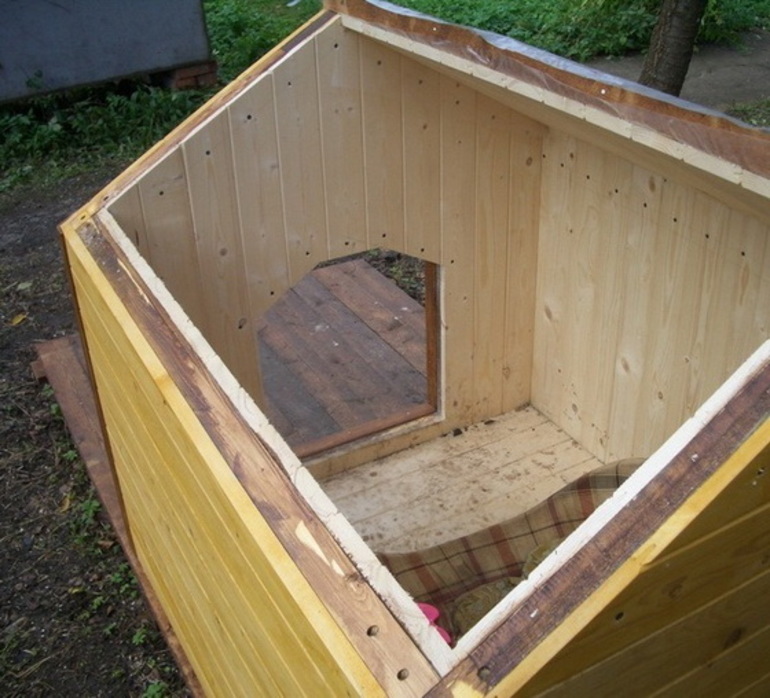
- the entrance to the kennel is located where the wind movement is minimal;
- the structure is assembled from natural wood;
- during rain, water should not leak inside, therefore the kennel is placed either on an elevation, or they make good waterproofing in it;
- the booth should be made in accordance with the size of the pets, it should not be crowded, but space is also undesirable.
Thermal insulation should provide protection from wind, moisture and frost. If the doghouse is easily dismantled, then it is worth giving preference to internal warming. When the structure is fully assembled and it is impossible to disassemble it, it is necessary to pay attention to the external insulation. In the latter case, you will need a finishing lining, otherwise the house will look unattractive and spoil the appearance of the site.
Material selection
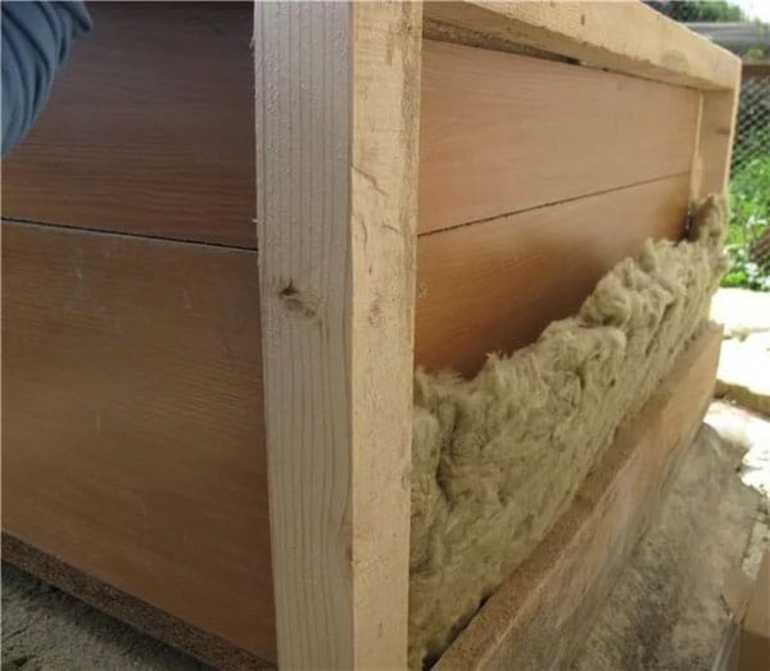
Since the house is insulated for the animal, some requirements must be taken into account during installation. The walls of the booth must be insulated with material that should not be easily damaged, otherwise it will quickly become worthless. In addition, it is advisable to use natural heat insulators that do not emit harmful compounds and can not harm the health of the pet.
It is also worth reliably and efficiently isolating the internal part of the structure, otherwise some materials may irritate the respiratory organs of the animal. That is why it is worth taking the choice of insulation seriously. It is worth considering the most common materials and find out the features of each of them.
Mineral wool
This material is considered one of the most popular. It is used not only for warming residential premises, but also for thermal insulation of a doghouse. In the latter case, it must be used with special care, since the animal can damage the mineral wool, resulting in a loss of its original technical characteristics. In addition, it can harm the health of a pet.
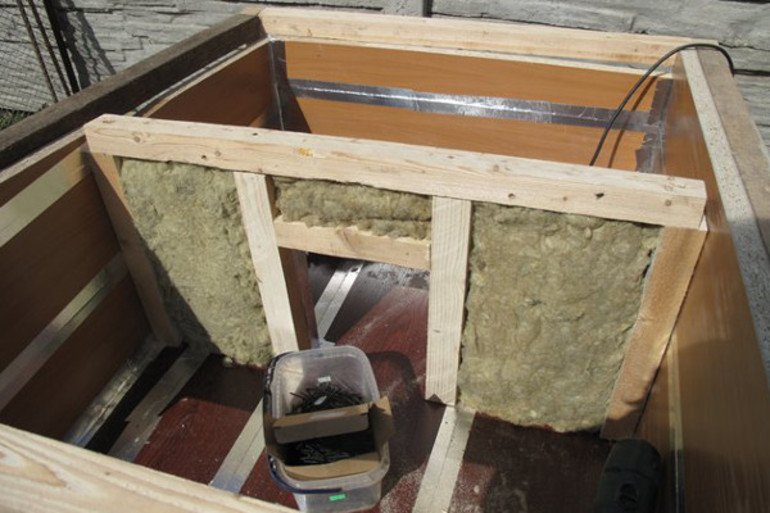
It is quite difficult to work with mineral wool because of the small area of the kennel. But if you still selected this material, then you need to apply it correctly:
- it is strictly forbidden to use glass wool as a heater;
- the thermal insulation layer is necessarily waterproofed.
Foam sheets
Styrofoam is considered an excellent insulation for a doghouse, it has much better thermal insulation characteristics than mineral wool. In addition, it is not so much exposed to external influences, so there is no need to additionally waterproof it. There are several types of material.that are ideal for equipping a kennel:
- penoplex;
- polystyrene foam.
Roll type heat insulators
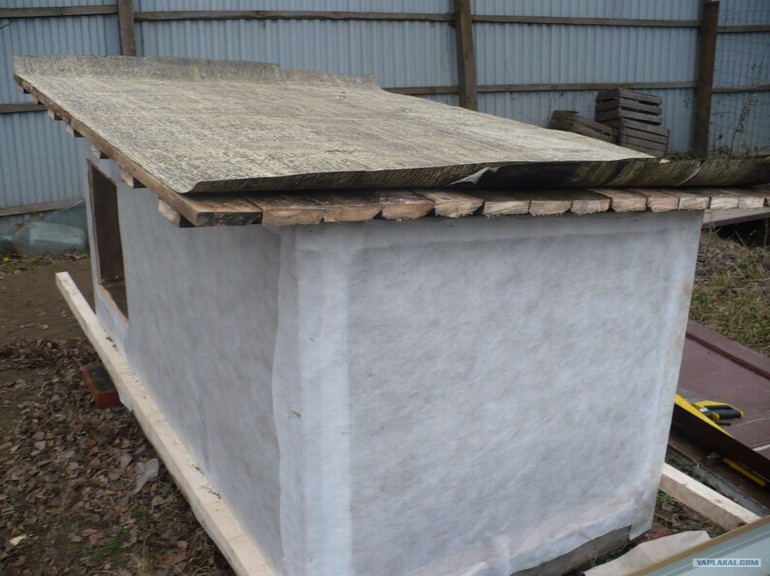
A roll heat insulator suitable for warming a booth is a plastic film. This material can be easily fixed to the walls and ceiling of the structure using a conventional building stapler. In addition, there are coil heat insulators that already have an adhesive base.
Another option is penofol. It also has good thermal insulation characteristics, but needs additional cladding, as it is subject to mechanical stress, as a result of which any damage can degrade its technical qualities.
Felt Application
This fabric of natural origin is well suited for warming the booth. Felt is characterized by an increased level of security and has an affordable cost, so it is an ideal solution for a dog kennel.
Due to its vapor-proof qualities, the material does not leak moisture, which means that it will always be dry and warm inside the dog’s housing. It is not blown by the wind and can not be covered with additional layers of protection. As a fixation, ordinary nails with small hats are suitable.
After the insulation is selected and purchased, you can proceed to installation. The event is conditionally divided into three stages, it is worth familiarizing yourself with each of them in more detail.
Bottom and flooring
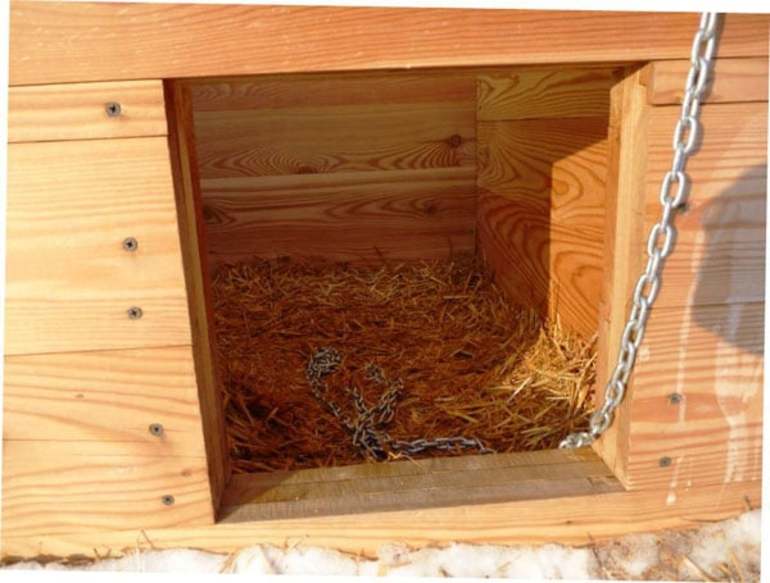
After that, the frame is returned to its original position and proceed to the interior decoration. A waterproofing film is laid on the floor, you can use the same roofing material for this. During installation, it should be borne in mind that the material should go with a slight overlap, in this case you can avoid the appearance of gaps and crevices that cause drafts. As a clamp, you can use the mounting stapler.
The final floor is going to finish, it can be made from any old boards, plywood or OSB boards. After this, additional insulation should be taken, which will protect the kennel from the cold in winter.
Insulation is done in the place where the frame will be installed. To do this, dig a hole 20-30 cm deep. A layer of expanded clay or gravel is poured into it, creating a kind of pillow, a sheet of roofing material is laid on top, and then a booth is installed. This design will protect the kennel from possible freezing of the floor or leakage of moisture inside.
Construction walls
Each insulation is mounted in its own way, the exact scheme is always described in the instructions attached to the material. But in any case, the following events are always held:
- begin to work with the preparation of the surface of the walls, they are cleaned, and then treated with special compounds;
- if necessary, lay a layer of waterproofing;
- sheathing with a heater;
- fix the vapor barrier material;
- perform facing.
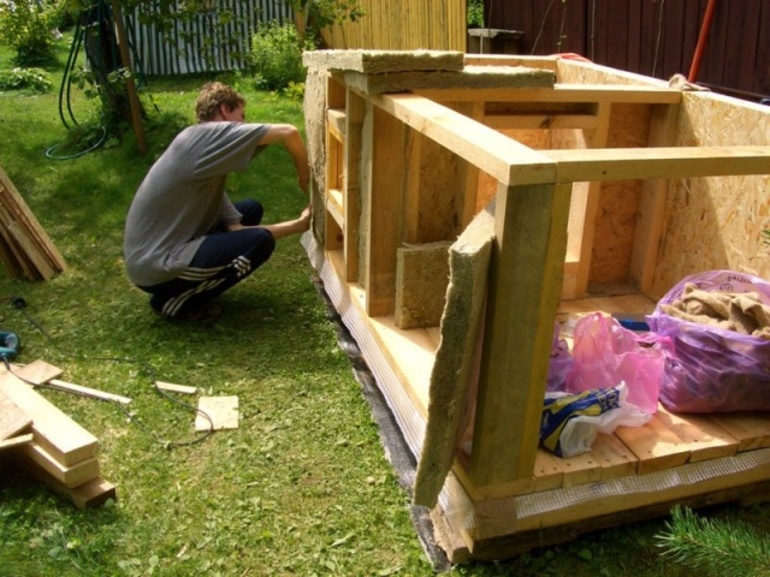
Ceiling and roof
If the booth is installed in a special enclosure with a furnished canopy, then you can make any roof and not even think over the insulation. In all other cases, it is best to mount a pitched version of a removable or collapsible roof.
The upper floor is insulated in the same way as the floor. At the very beginning, a plastic film is fixed, which will serve as a waterproofing layer, then a heater is laid. But in this place it is not necessary to protect him additionally, since the dog cannot damage him. It is advisable to cover the inner slopes around the perimeter with good insulating material.
Curtain setting
After the booth is fully insulated, you need to equip it with a curtain that will maintain the optimal temperature regime inside. As a fabric for making curtains fit:
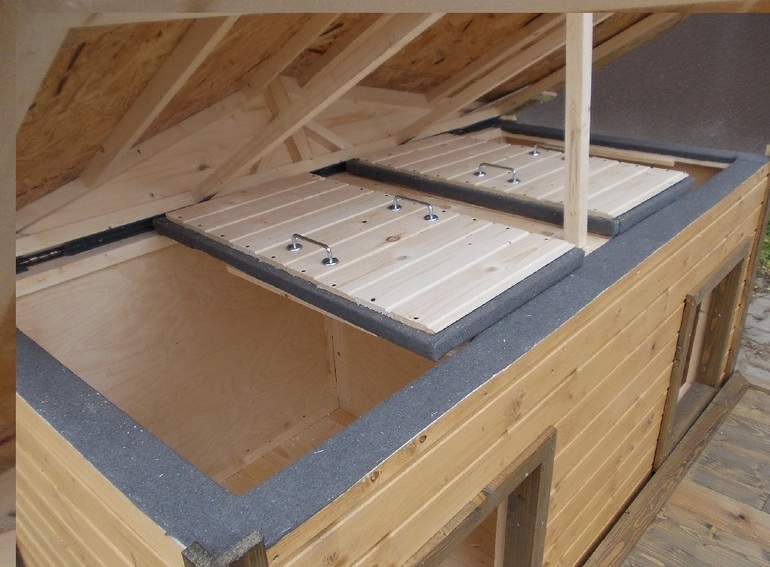
- Tarpaulin. This material is highly durable. In production, its base is treated with a special compound that prevents fire. A distinctive feature of this fabric is elasticity, so the curtain is easy to adjust according to the size of the entrance.
- Felt fabric. It is made on an artificial basis, so it perfectly retains heat inside the kennel. Felt can be easily cut into necessary pieces, without having to worry that the edges of the material will begin to crumble or tear.
When manufacturing a cloth door, it should be borne in mind that it should completely block the entrance, but at the same time not interfere with the pet. It is advisable to mark the required dimensions first and only then cut the fabric. It is best to make small allowances of 5 cm at the side and 10 cm at the bottom. It is best to fix the fabric with a wooden plank and screws, then the dog will not be able to rip it off by accident.

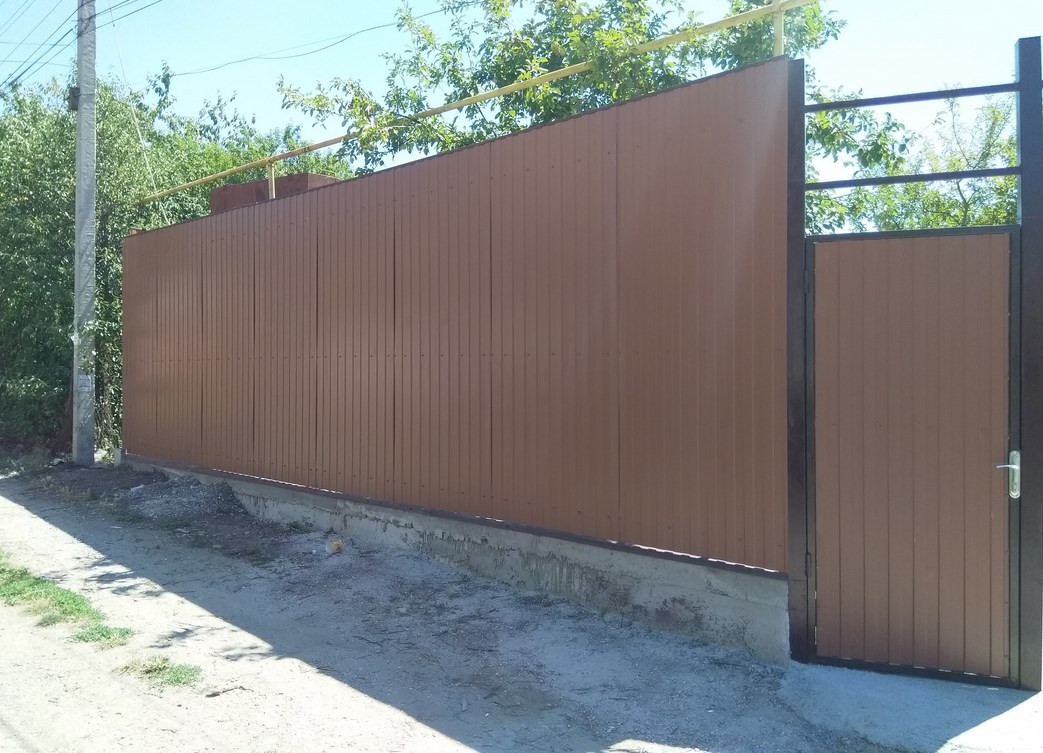
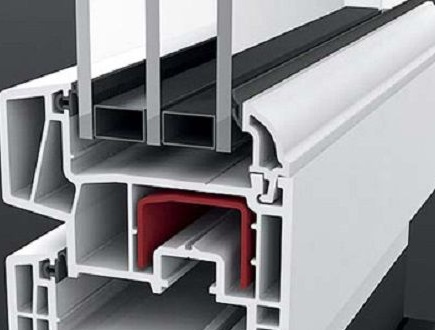
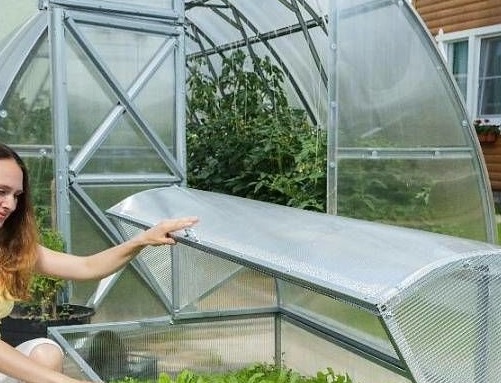
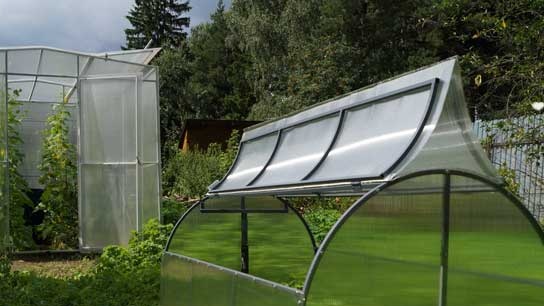 Why is a greenhouse open top?
Why is a greenhouse open top?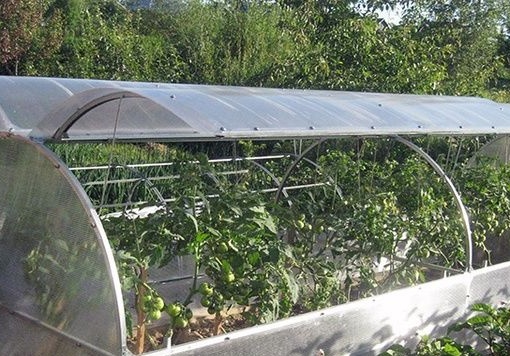 Greenhouse "Butterfly", is it worth it?
Greenhouse "Butterfly", is it worth it?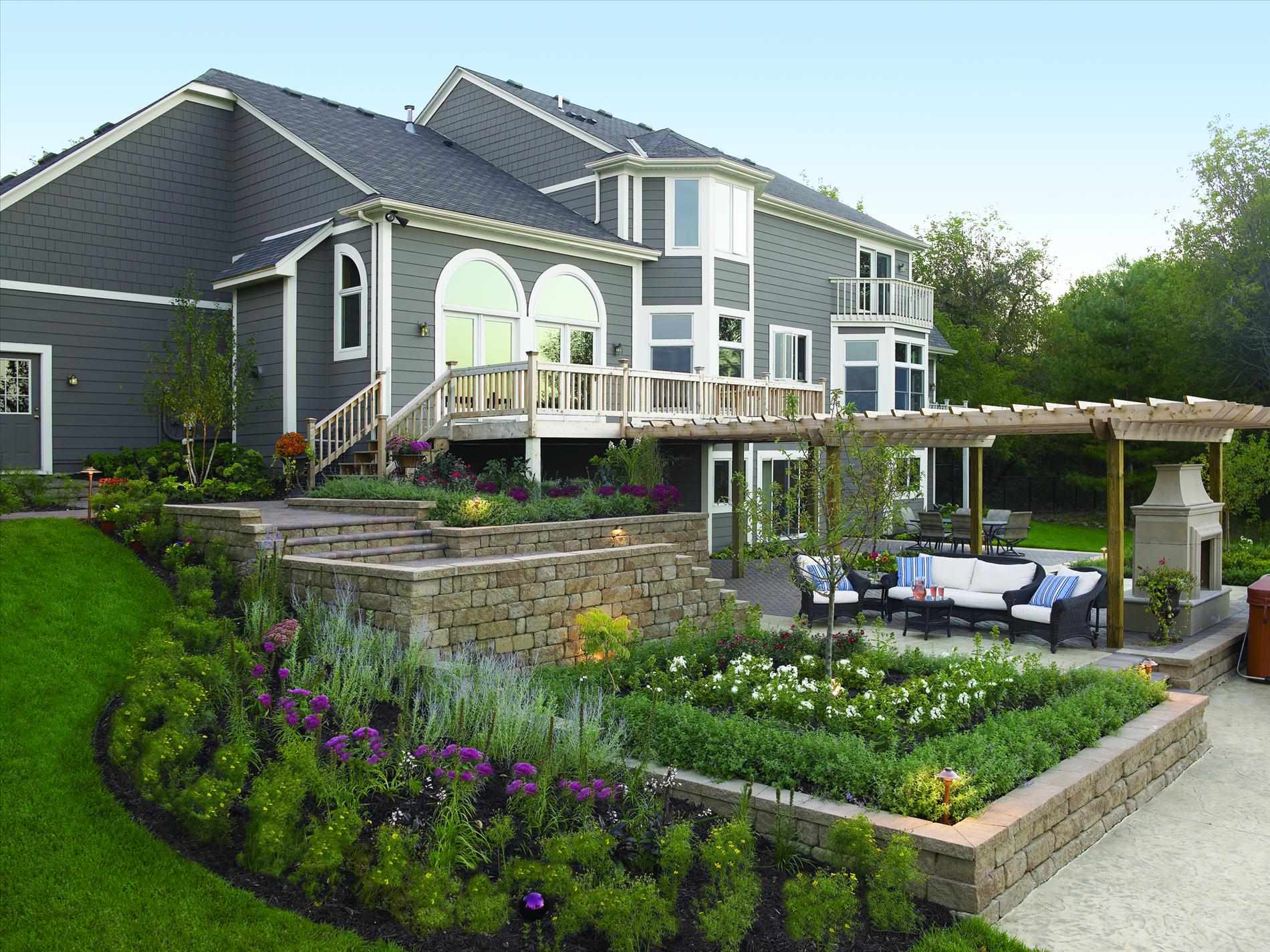 Do-it-yourself landscaping of an area of 8 acres: features of planning and zoning
Do-it-yourself landscaping of an area of 8 acres: features of planning and zoning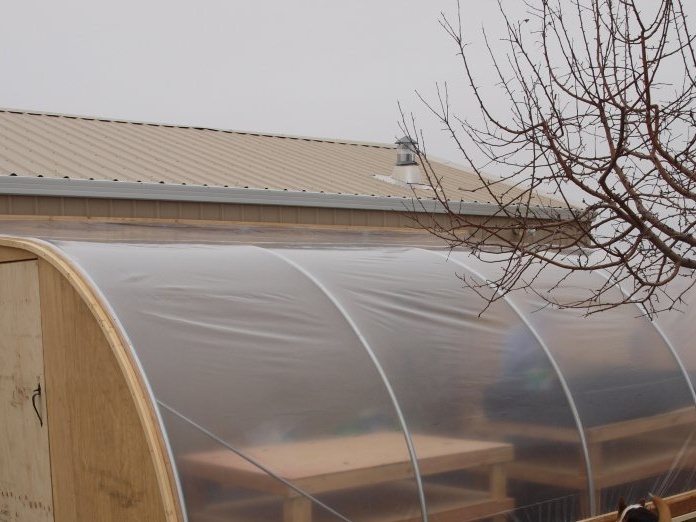 Shed greenhouse, pros and cons
Shed greenhouse, pros and cons